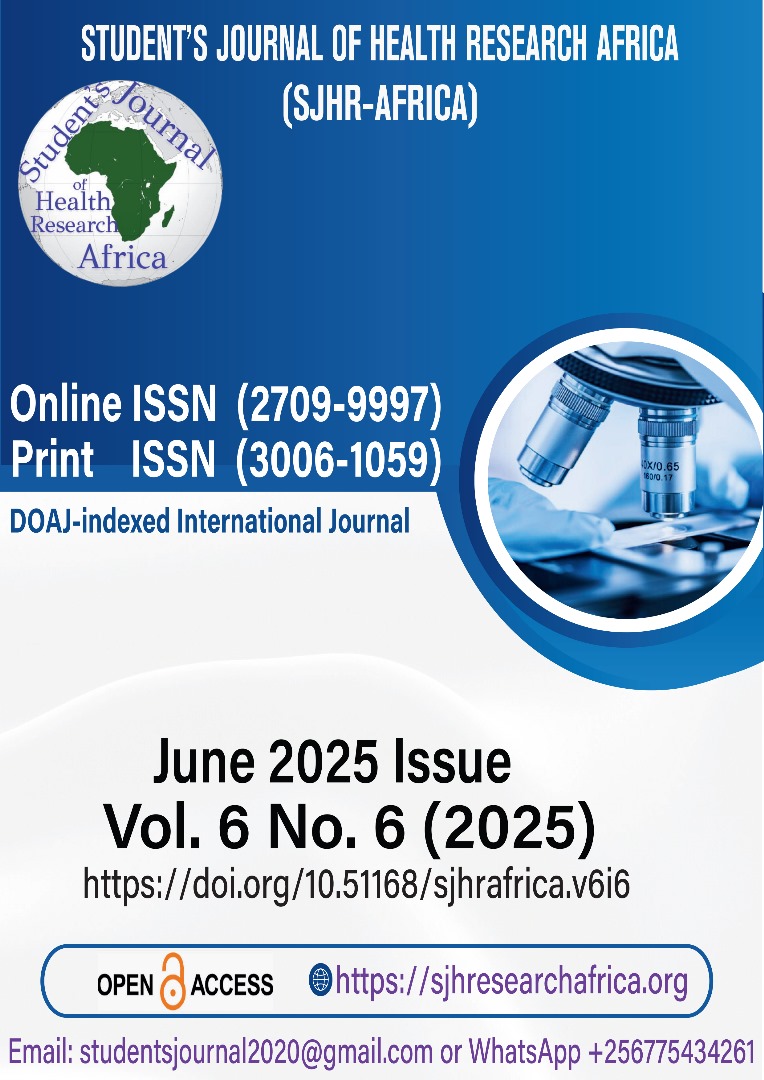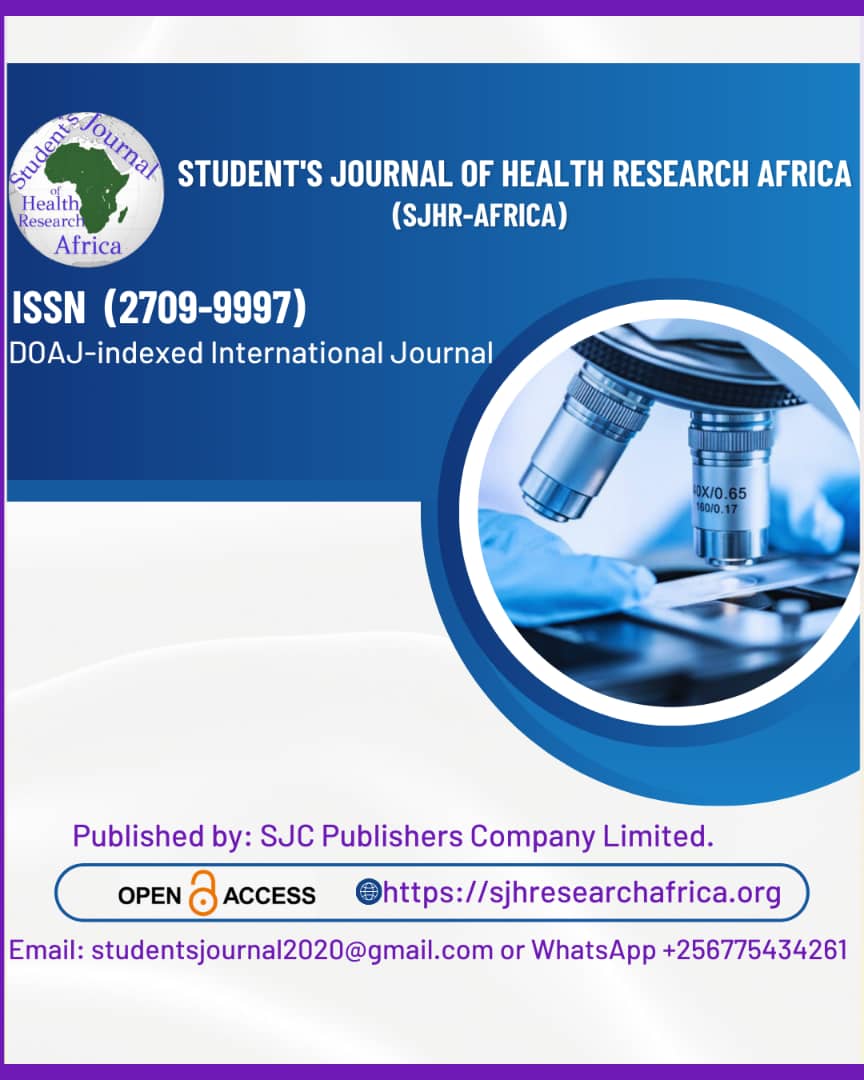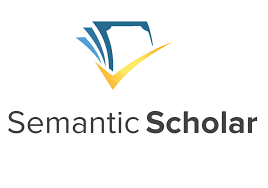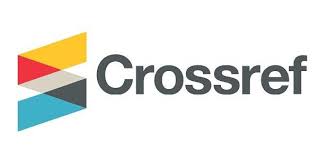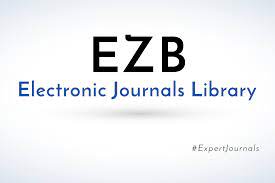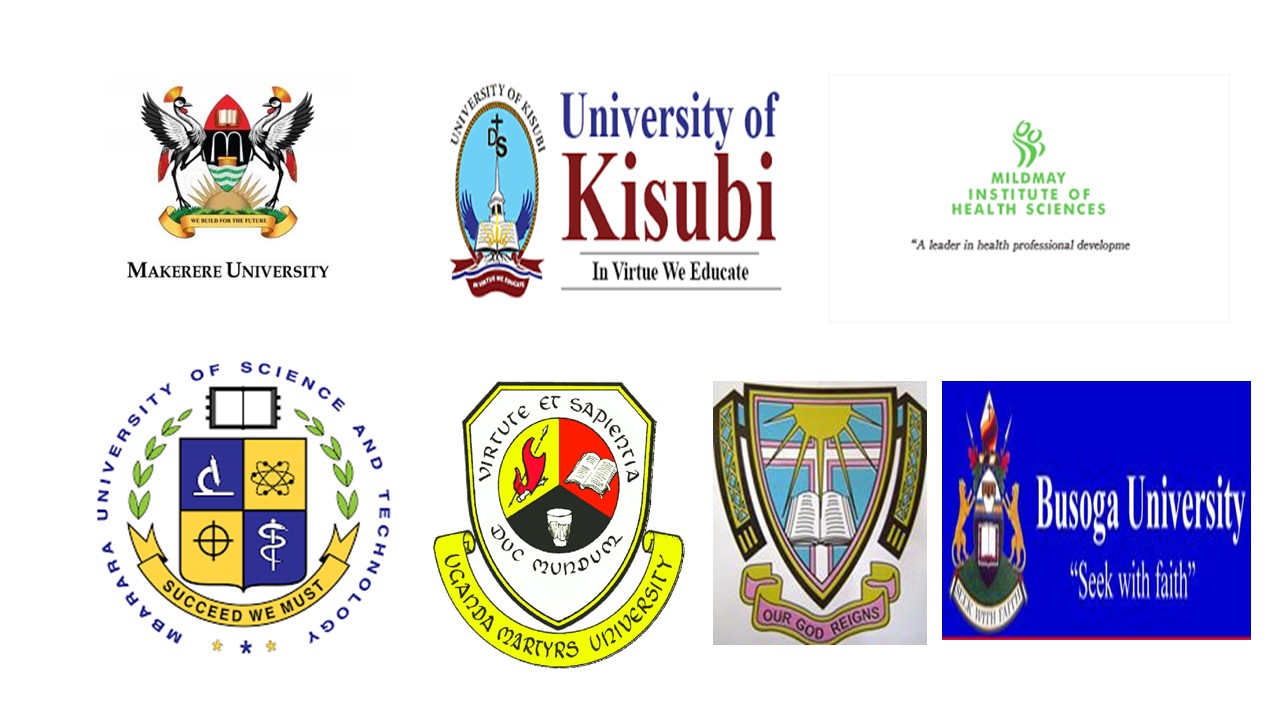The FINANCIAL LITERACY AND FINANCIAL PERFORMANCE OF BUSINESSES OF PERSONS WITH DISABILITIES IN UGANDA: A CASE OF NUDIPU-iSAVE GROUP BENEFICIARIES, NORTHERN DIVISION, KAMULI DISTRICT
Financial performance of businesses of persons with disabilities
DOI:
https://doi.org/10.51168/sjhrafrica.v6i6.1524Keywords:
Financial Performance, Financial literacy, Persons with Disabilities iSAVE ModelAbstract
The study examined the effect of financial literacy on the financial performance of businesses of Persons with Disabilities in Uganda. A case of NUDIPU-iSAVE group beneficiaries, Northern Division, Kamuli District. The study’s specific objectives were; to examine the effect of budgeting literacy, saving literacy and debt management literacy on the financial performance of businesses of Persons with Disabilities under NUDIPU-iSAVE Economic Empowerment Model Northern Division, Kamuli District. The study was underpinned by theory of planned behavior. The study adopted a survey design that employed quantitative and qualitative methods targeting a population of 221 with a sample size of 152 selected and of these respondents, 127 responded (83.6% response rate). This sample was selected using stratified random, purposive sampling techniques and census. Data were collected using a researcher administered questionnaire, Focus Group Discussions, face to face interviews with the key infromansts and document review. Data were analysed using descriptive and inferential statistics (regression analysis in particular) in SPSS 29.0. The study established that budgeting literacy, savings literacy and debt management literacy all have a significant effect on financial performance of businesses of PwDs. The study concluded that improving budgting literacy, saving literacy and debt management literacy would improve the financial performance of businesses of PwDs. It was recommended that project management should improve on the weak aspects of each financial literacy aspects, namely budgeting, savings and debt management literacy to enhance they financial performance.However, it was recommended that priority should be given to savings literacy, followed by budgeting literacy and debt management literacy owing to the relative prediction strength business performance. Further research can be conducted to establish an ideal framework for enhancing the economic and technical sustainability of NUDIPU-iSave Economoc Empwoernment Model.
References
REFERENCES (APA 7TH EDITION)
Achmad, E. (2022). Proposed Business Strategy to Increase Revenue in Power Generation Sector. International Journal of Current Science Research and Review. https://doi.org/10.47191/ijcsrr/v5-i4-46
Agbenyo, W., Danquah, F. O., & Shuangshuang, W. (2018). Budgeting and Its Effect on the Financial Performance of Listed Manufacturing Firms: Evidence from Manufacturing Firms Listed on Ghana Stock Exchange Impact of Financial Inclusion on economic growth in Ghana View project Budgeting and Its Effect on the Fi. Research Journal of Finance and Accounting , 9(8), 12–22. Retrieved from https://www.researchgate.net/publication/324951715
Alarussi, A. S., & Gao, X. (2021). Determinants of profitability in Chinese companies. International Journal of Emerging Markets. https://doi.org/10.1108/IJOEM-04-2021-0539
Anastasie, U., & Rusibana, C. (2020). Accounting Practices and Success of Business: A Survey of Traders of Muhanga Commercial Centre in Rwanda. Journal of Advance Research in Business Management and Accounting (ISSN: 2456-3544). https://doi.org/10.53555/nnbma.v6i9.895
Andres, L. (2017). Survey Research Design – Then and Now. In Designing & Doing Survey Research. https://doi.org/10.4135/9781526402202.n1
Angwenyi V, Muuo SW, Virendrakumar B, Okello G, Kibet H, Nduta S, Gichohi K, Ndoria M & Jolley E. (2023). Financial inclusion for persons with disabilities in Kenya: A rapid review and qualitative study. Nairobi: Sightsavers.
Archuleta, K. L., Mielitz, K. S., Jayne, D., & Le, V. (2020). Financial Goal Setting, Financial Anxiety, and Solution-Focused Financial Therapy (SFFT): A Quasi-experimental Outcome Study. Contemporary Family Therapy. https://doi.org/10.1007/s10591-019-09501-0
Association of Certified Fraud Examiners (ACFE). (2018). Global Study on Occupational Fraud and Abuse. Association of Certified Fraud Examiners.
Atwijukire, J. (2021). Joint End Term Evaluation The Economic Empowerment of Youth with Disabilities in Uganda and Improving Livelihoods for Youth with Disabilities in Uganda February 2021 Joint End of Term Evaluation Report The Economic Empowerment of Youth with Disabilities i. (February), 1–104.
Babbie, E. (2007). The Ethics and Politics of Social Research. In The Practice of Social Research.
Bahry, N. S., Kori, N. L., & Ali, A. M. (2023). The Challenges of Disabled Entrepreneurs: A Systematic Review. Journal of International Business, Economics and Entrepreneurship, 8(2), 54–63. https://doi.org/10.24191/jibe.v8i2.24044
Bannier, C. E., & Sinzig, D. (2018). Financial literacy and savings behavior. Schmalenbachs Zeitschrift Fur Betriebswirtschaftliche Forschung. https://doi.org/10.1007/s41471-017-0044-y
Bednar, R., Tariskova, N., & Zagorsek, B. (2018). Startup revenue model failures. Montenegrin Journal of Economics. https://doi.org/10.14254/1800-5845/2018.14-4.10
Bella, A., & Dartanto, T. (2018). Persons with Disabilities ( PWD ) and Poverty in Indonesia Persons with Disabilities ( PWD ) and Poverty in Indonesia. 55(November). https://doi.org/10.22452/MJES.vol55no2.2
Bhattacharyya, S., Kaur, R., Kaur, S., & Amaan Ali, S. (2017). Validity and reliability of a questionnaire: a literature review. Chronicles of Dental Research, 6(2), 17–24.
Botelho, T., Harrison, R., & Mason, C. (2021). Business angel exits: a theory of planned behaviour perspective. Small Business Economics. https://doi.org/10.1007/s11187-019-00292-0
BOU. (2017). The Republic of Uganda National Financial Inclusion Strategy 2017-2022. 74.
Bruno, G., & Drexler, M. (2016). Accelerating Capital Markets Development in Emerging Economies Country Case Studies. World Economic Forum, (May), 1–26. Retrieved from http://www3.weforum.org/docs/WEF_accelerating-capital-markets-development-in-emerging-economies.pdf
Canfell, O. J., Davidson, K., Sullivan, C., Eakin, E., & Burton-Jones, A. (2022). Data sources for precision public health of obesity: a scoping review, evidence map and use case in Queensland, Australia. BMC Public Health. https://doi.org/10.1186/s12889-022-12939-x
Cao-Alvira, J. J., Novoa-Hoyos, A., & Núñez-Torres, A. (2021). On the financial literacy, indebtedness, and wealth of Colombian households. Review of Development Economics. https://doi.org/10.1111/rode.12739
Chammassian, R. G., & Sabatier, V. (2020). The role of costs in business model design for early-stage technology startups. Technological Forecasting and Social Change. https://doi.org/10.1016/j.techfore.2020.120090
Cortez, M. C., Andrade, N., & Silva, F. (2022). The environmental and financial performance of green energy investments: European evidence. Ecological Economics. https://doi.org/10.1016/j.ecolecon.2022.107427
Coy, J. M., & Garcia-Feijoo, L. (2022). Growth options, risk dynamics, and cost of capital: Evidence from U.S. corporate control transactions. Quarterly Review of Economics and Finance. https://doi.org/10.1016/j.qref.2020.10.010
Creswell, J. W., & Creswell, J. D. (2018). Research Design: Qualitative,quantititive, and mixed methods approcahes (5th Editio). SAGE Publications, Inc.
Deniz, V. (2020). Application of multiple linear regression (MLR) analysis for concentration of chromite tailings by the flotation. Physicochemical Problems of Mineral Processing. https://doi.org/10.37190/PPMP/122710
Diéguez-Soto, J., Martínez-Romero, M. J., Corten, M., & Michiels, A. (2022). The impact of the CEO’s financial literacy on family SMEs’ growth: the moderating role of generational stage. Baltic Journal of Management, 17(1), 89–106. https://doi.org/10.1108/BJM-01-2021-0003
Dixon, S., & Quirke, L. (2018). What’s the Harm? The Coverage of Ethics and Harm Avoidance in Research Methods Textbooks. Teaching Sociology. https://doi.org/10.1177/0092055X17711230
Drost, E. A. (2011). Validity and Reliability in Social Science Research. Education Research and Perspectives, 38(1), 105–123.
Easton-Calabria, E., & Hakiza, R. (2021). In the interest of saving: Refugee-led microfinance in Kampala, Uganda. Development Policy Review. https://doi.org/10.1111/dpr.12500
Etikan, I. (2016). Comparison of Convenience Sampling and Purposive Sampling. American Journal of Theoretical and Applied Statistics, 5(1), 1. https://doi.org/10.11648/j.ajtas.20160501.11
Etoromat, L. (2022). International Journal of Current Science Research and Review Debt Management Literacy and Financial Performance of Saccos in Kumi County - Kumi Uganda. 05(01), 109–124. https://doi.org/10.47191/ijcsrr/V5-i1-13
Fatihudin, D., & Mochklas, M. (2018). HOW MEASURING FINANCIAL. (June).
Fiergbor, D. D. (2020). The Habit of Savings among College students. Global Economics Science. https://doi.org/10.37256/ges.11202069.38-43
Foster, T. A. (2017). Budget planning, budget control, business age, and financial performance in small businesses. Walden Dissertations and Doctoral Studies Collection, (4), 123.
Fusco, F., & Migliaccio, G. (2019). Cooperatives and crisis: Economic dynamics in Italian context. International Journal of Business and Globalisation. https://doi.org/10.1504/IJBG.2019.100258
Gallery, N., Newton, C., & Palm, C. (2011). Framework for assessing financial literacy and superannuation investment choice decisions. Australasian Accounting, Business and Finance Journal, 5(2), 3–22.
Giannopoulos, G., Fagernes, R. V. K., Elmarzouky, M., & Hossain, K. A. B. M. A. (2022). The ESG Disclosure and the Financial Performance of Norwegian Listed Firms. Journal of Risk and Financial Management. https://doi.org/10.3390/JRFM15060237
Goodman, N., O’day, B., & Morris, M. (2017). Financial Capability of Adults With Disabilities Findings From the National Financial Capability Study. National Disability Institute. www.finrafoundation.org.
Goodwin, J., Ahmed, K., & Heaney, R. (2008). The Effects of International Financial Reporting Standards on the Accounts and Accounting Quality of Australian Firms: A Retrospective Study. Journal of Contemporary Accounting & Economics. https://doi.org/10.1016/s1815-5669(10)70031-x
Gu, Y., & Gao, S. (2016). Analysis on the Logistics Cost Control of Self-Logistics System in the Electric Business Enterprise. American Journal of Industrial and Business Management. https://doi.org/10.4236/ajibm.2016.612104
Hamba, J. (2022). Annual iSAVE Programe Report Kamuli District Union.
Hart, R. G. (2023). Business Development, Revenue Generation and the Impact of a Changing Environment. In Canada Enters the Nuclear Age. https://doi.org/10.1515/9780773566538-023
Hauslbauer, A. L., Schade, J., Drexler, C. E., & Petzoldt, T. (2022). Extending the theory of planned behavior to predict and nudge toward the subscription to a public transport ticket. European Transport Research Review. https://doi.org/10.1186/s12544-022-00528-3
Hennink, M. M., Leavy, P., & Hennink, M. M. (2015). Introducing Focus Group Discussions. In Understanding Focus Group Discussions. https://doi.org/10.1093/acprof:osobl/9780199856169.003.0001
Hermansson, C., & Jonsson, S. (2021). The impact of financial literacy and financial interest on risk tolerance. Journal of Behavioral and Experimental Finance, 29. https://doi.org/10.1016/j.jbef.2020.100450
Hinrichs, U., Carpendale, S., Knudsen, S., & Thudt, A. (2017). Analyzing qualitative data. Proceedings of the 2017 ACM International Conference on Interactive Surfaces and Spaces, ISS 2017. https://doi.org/10.1145/3132272.3135087
Hoang, D. P. (2022). Factors Affecting Behavioral and Psychological Perspective of Young Vietnamese Customers in Buying Second-Hand Clothes. Journal of Economics, Finance And Management Studies. https://doi.org/10.47191/jefms/v5-i5-13
Hofstrand, D. (2019). Understanding Profitability. Department of Economics, (December), 1–5. Retrieved from https://www.extension.iastate.edu/agdm/wholefarm/html/c3-24.html
Huo, Y., Messenger, R. A., & Miller, D. (2022). Students’ perspectives on why they drop out and possible retention strategies. Higher Education, Skills and Work-Based Learning. https://doi.org/10.1108/HESWBL-10-2021-0189
Ibe, U. G., & Pibowei, W. E. (2021). The Effect Of Debt Management On Corporate Financial Performance 0f Lafarge Africa Plc (2010-2021), 1–22.
Jones-Khosla, L. A., & Gomes, J. F. S. (2023). Purpose: From theory to practice. Global Business and Organizational Excellence. https://doi.org/10.1002/joe.22203
Jones, A. S., & Godday, O. O. (2015). Imperatives of Variance Analysis for Cost Control in Business Organizations : An Empirical Study of Delta State. NG-Journal of Social Development. https://doi.org/10.12816/0032084
Kefale, D. & Hussein, F. (2020). Challenges of Entrepreneurs Live with Disabilities to Establish and Expand They Own Business in Case of Guraghe Zone, Ethiopia. Management, Vol. 10 No. 2, 2020, pp. 55-69. doi: 10.5923/j.mm.20201002.03
Kimunduu, G., Erick, O., & Shisia, A. (2016). A study on the influence of financial literacy on financial performance of small and medium enterprises in Ruiru Town, Kiambu County, Kenya. International Journal of Economics, Commerce and Management United Kingdom, IV(11), 416–433.
Kirkham, R. J. (2022). Estimation of costs and expenses in Business. In The Front-end of Large Public Projects: Paradoxes and Ways Ahead. https://doi.org/10.4324/9781003257172-5
Kogan, L., Zhang, H., Aggarwal, R., Ai, H., Axelson, U., Belo, F., … Zhang, M. Ben. (2022). Operating Hegde and Gross Profitability Premium. (No. Working Paper 30241). https://doi.org/http://www.nber.org/papers/w30241
Krejcie, R. V., & Morgan, D. W. (1970). Determing sample size for research activities. Educational and Psychological Management, 30, 607–610.
Kross, J., & Giust, A. (2019). Elements of research questions in relation to qualitative inquiry. Qualitative Report. https://doi.org/10.46743/2160-3715/2019.3426
Kyere, M., & Ausloos, M. (2021). Corporate governance and firms financial performance in the United Kingdom. International Journal of Finance and Economics. https://doi.org/10.1002/ijfe.1883
Lock, D. (2020). Estimating Project Costs. In Project Management. https://doi.org/10.4324/9781315245911-4
Luo, X. R., Chew, P. A., & Robinson, D. G. (2012). Automated account reconciliation using probabilistic and statistical techniques. International Journal of Accounting & Information Management. https://doi.org/10.1108/18347641211272722
Maarse, A. (2020). From Financial Exclusion to Formal Inclusion: Empirical evidence from the Microfinance and Disability Project in Uganda. 1–37.
Maclean, K. D. S. (2023). Sales and revenue generation in sport business by David J. Shonk and James F. Weiner. 2021. Journal of Revenue and Pricing Management. https://doi.org/10.1057/s41272-023-00429-7
Mastercard. (2015). MasterCard Financial Literacy Index Report. Mastercard Intellegence.
Mayukh, N., & Al-Giffari, H. A. (2023). Survey and Experimentation: Critical Review of Research Design in Social Sciences. Jurnal Syntax Transformation. https://doi.org/10.46799/jst.v4i10.842
Mbogo, M., Olando, C., & Macharia, J. (2021). Effect of Budgeting Practices on Financial Performance of Manufacturing Small and Medium Enterprises in Nairobi County, Kenya. Technology & Entrepreneurship in Africa, 12(1), 2021.
McGuire, A. L., & Beskow, L. M. (2010). Informed consent in genomics and genetic research. Annual Review of Genomics and Human Genetics. https://doi.org/10.1146/annurev-genom-082509-141711
Menike, L. M. C. S. (2019). Effect of Financial Literacy on Firm Performance of Small and Medium Enterprises in Sri Lanka. SSRN Electronic Journal, 1–25. https://doi.org/10.2139/ssrn.3306719
Mittapalli, K., Henriette Taylor, Zena Itani, H. A., & Laura Skaff, M. W. (2019). Financial Literacy for Youth With Disabilities Delivery Order : Issue Paper Draft Government Contract Number : DOLU089428189FL LEAD AUTHOR Dr . Kavita Mittapalli ( Social Dynamics ) Research and Editorial Support Henriette Taylor , Zena Itani , Halima Ahm.
Morgan, P. J., & Long, T. Q. (2020). Financial literacy, financial inclusion, and savings behavior in Laos. Journal of Asian Economics. https://doi.org/10.1016/j.asieco.2020.101197
Msomi, T. S., & Olarewaju, O. M. (2022). Effect of budgeting and financial awareness sustianability of small and medium enterprises in South Africa during the covid-19 era. Journal of Accounting and Management, 11(3), 61–75.
Murphy, C. B. (2019). Pros and Cons of Stratified Random Sampling. Https://Www.Investopedia.Com/Ask/Answers/041615/What-Are-Advantages-and-Disadvantages-Stratified-Random-Sampling.Asp.
Mushtaq, U., Suhail, L., & Bhat, A. (2022). Impact of financial literacy on financial well ‑ being : a mediational role of financial self ‑ efficacy. Journal of Financial Services Marketing, (0123456789). https://doi.org/10.1057/s41264-022-00183-8
Mutiso, A. N., & Muigai, R. G. (2018). An Assessment of Financial Literacy and the Performance of UWEZO Funded SME ’ s in Kirinyaga County , Kenya. Journal of Economics and Sustainable Development.
Naami, A., Mills, A. A., & Abbey, E. (2023). Financial Capability and Asset Building (FCAB) for Persons with Disabilities in Ghana: the Role of Social Workers. Global Social Welfare, 10(1), 29–38. https://doi.org/10.1007/s40609-022-00250-x
Nicolini, G., & Nicolini, G. (2019). Financial literacy. In Financial Literacy in Europe. https://doi.org/10.4324/9780429431968-2
Niţă, C. G., & Ştefea, P. (2014). Cost Control for Business Sustainability. Procedia - Social and Behavioral Sciences. https://doi.org/10.1016/j.sbspro.2014.02.490
Noble, H., & Smith, J. (2015). Issues of validity and reliability in qualitative research. Evidence-Based Nursing, 18(2), 34–35. https://doi.org/10.1136/eb-2015-102054
Oncioiu, I., Petrescu, A. G., Bîlcan, F. R., Petrescu, M., Popescu, D. M., & Anghel, E. (2020). Corporate sustainability reporting and financial performance. Sustainability (Switzerland). https://doi.org/10.3390/su12104297
Ozili, P. K. (2020). Theories of Financial Inclusion. Uncertainty and Challenges in Contemporary Economic Behaviour, (104257), 89–115. https://doi.org/10.1108/978-1-80043-095-220201008
Pattanayak, S. (2016). Expenditure Control: Key Features, Stages, and Actors. 1–227. Retrieved from https://www.imf.org/external/pubs/ft/tnm/2016/tnm1602a.pdf
Peiris, T. U. I. (2021). Effect of Financial Literacy on Individual Savings Behavior; the Mediation Role of Intention to Saving. European Journal of Business and Management Research. https://doi.org/10.24018/ejbmr.2021.6.5.1064
Polit, D. F., & Beck, C. T. (2006). The content validity index: Are you sure you know what’s being reported? Critique and recommendations. Research in Nursing and Health. https://doi.org/10.1002/nur.20147
Poullie, Y. (2022). Interview guide. In National Action Plans in the Global Governance of Business and Human Rights. https://doi.org/10.5771/9783957103994-439
Pradeep, S., & Chandrachoodan Nair, B. (2018). Perceived financial literacy and savings behavior of it professionals in Kerala. International Journal of Mechanical Engineering and Technology.
Rasika, K., & Suguna, M. (2021). Challenges Faced by Disabled Entrepreneurs and they Constitutional Framework. Journal of Emerging Technilogies and Innovation Research, 8(11), 106–113.
Razzack, A. A., Patel, N., & Patel, A. (2023). Budgeting. In Handbook for Designing and Conducting Clinical and Translational Surgery. https://doi.org/10.1016/B978-0-323-90300-4.00093-8
Reni, F., & Anggraini, R. (2016). The Role of Perceived Behavioral Control and Subjective Norms to Internal Auditors ’ Intention in Conveying Unethical Behavior : A Case Study in Indonesia. 5(2), 141–150.
Rueda Barrios, G. E., Rodriguez, J. F. R., Plaza, A. V., Vélez Zapata, C. P., & Zuluaga, M. E. G. (2022). Entrepreneurial intentions of university students in Colombia: Exploration based on the theory of planned behavior. Journal of Education for Business. https://doi.org/10.1080/08832323.2021.1918615
Sangün, L., & Güney, O. İ. (2018). Application of multiple regression analysis to morphometric characters obtained from Serranus cabrilla (Linnaeus, 1758) by using stepwise method. Indian Journal of Animal Research. https://doi.org/10.18805/ijar.v0iof.9185
Sarumi, O. O., Ojokoh, B. A., Sarumi, O. A., & Adewale, O. S. (2022). Financial accounts reconciliation system using enhanced mapping algorithm. International Journal of Business Intelligence and Data Mining. https://doi.org/10.1504/IJBIDM.2022.124843
Saunders, M., Lewis, P., & Thornhill, A. (2012). Research Methods for Business Students (P. E. Ltd, Ed.). Harlow.
Schlag, A. K., Aday, J., Salam, I., Neill, J. C., & Nutt, D. J. (2022). Adverse effects of psychedelics: From anecdotes and misinformation to systematic science. In Journal of Psychopharmacology. https://doi.org/10.1177/02698811211069100
Schober, P. (2018). Correlation Coefficients: Appropriate Use and Interpretation. Anesthesia & Analgesia 126(5): 1763-1768
Shaw, I. (2008). Ethics and the practice of qualitative research. Qualitative Social Work. https://doi.org/10.1177/1473325008097137
Shaw, S., & Barrett, G. (2006). Research governance: Regulating risk and reducing harm? Journal of the Royal Society of Medicine, 99(1), 14–19. https://doi.org/10.1258/jrsm.99.1.14
Shields, J. (2006). Effects of atmospherics on revenue generation in small business restaurants. Journal of Business and Entrepreneurship.
Siqueira, M. S. S., Nascimento, P. O., & Freire, A. P. (2022). Reporting Behaviour of People with Disabilities in relation to the Lack of Accessibility on Government Websites: Analysis in the light of the Theory of Planned Behaviour. Disability, CBR and Inclusive Development. https://doi.org/10.47985/dcidj.475
Situmorang, S. H. (2021). The Challenges of FinTech Inclusion and Digitization of SMEs in Indonesia. https://doi.org/10.4018/978-1-7998-8447-7.ch008
Subedi, B. P. (2016). Using Likert Type Data in Social Science Research: Confusion, Issues and Challenges. International Journal of Contemporary Applied Sciences, 3(2), 2308–1365. Retrieved from www.ijcas.net
Tharanga, B. B., & Gamage, S. C. (2021). Impact of Financial Literacy on Financial Behavior of Management Undergraduates in Sri Lanka - Evidence From a State. International Journal of Economics, Commerce and Management, IX(9), 126–136.
Thohari, S., & Rizky, U. F. (2021). Persons with disabilities’ financial literacy and access to financial services. Jurnal Ekonomi Dan Bisnis, 24(1), 47–64. https://doi.org/10.24914/jeb.v24i1.3675
Toshniwal, D. R. (2016). Concept of Profit and Profitability of. 174–178.
UBOS. (2021). Uganda Bureau of Statistics ; 2021 Statistical Abstract. Uganda Bureau of Statistics Statistics, 1, 38–40. http://www.ubos.org/onlinefiles/uploads/ubos/pdf documents/abstracts/Statistical Abstract 2013.pdf
UIA. (2021). Small and medium enterprises ( SMEs Division). Uganda Investment Authority Brief, 3(10), 3–5.
Ulker-Demirel, E., & Ciftci, G. (2020). A systematic literature review of the theory of planned behavior in tourism, leisure and hospitality management research. Journal of Hospitality and Tourism Management. https://doi.org/10.1016/j.jhtm.2020.04.003
United Nations (2015). The 17 Sustainable Development Goals. Department of Economic and Social Affairs. https://sdgs.un.org/goals.
Vinnell, L. J., Milfont, T. L., & McClure, J. (2021). Why do people prepare for natural hazards? Developing and testing a Theory of Planned Behaviour approach. Current Research in Ecological and Social Psychology. https://doi.org/10.1016/j.cresp.2021.100011
Vinod, B. (2022). Airline revenue planning and the COVID-19 pandemic. Journal of Tourism Futures. https://doi.org/10.1108/JTF-02-2021-0055
Voelkle, M. C., & Hecht, M. (2017). Cross-Sectional Research Designs. In Encyclopedia of Personality and Individual Differences. https://doi.org/10.1007/978-3-319-28099-8_1295-1
Willie, P. A. (2017). Revenue management for Canadian professional sports organizations. Worldwide Hospitality and Tourism Themes. https://doi.org/10.1108/WHATT-04-2017-0021
Wollast, R., Schmitz, M., Bigot, A., & Luminet, O. (2021). The Theory of Planned Behavior during the COVID-19 pandemic: A comparison of health behaviors between Belgian and French residents. PLoS ONE. https://doi.org/10.1371/journal.pone.0258320
World Health Organisation. (2021). WHO Policy on Disability. WHO Policy on Disability, 1–16.
World Health Organisation (2023). Financial Inclusion For Persons With Disabilities Insights From Afi Members ’ Strategies And Policies. https://doi.org/https://www.afi-global.org/wp-content/uploads/2023/11/Financial-Inclusion-for-Persons-With-Disabilities.pdf
Yakob, S., Yakob, R., B.A.M., H.-S., & Rusli, R. Z. A. (2021). Financial Literacy and Financial Performance of Small and Medium-sized Enterprises. The South East Asian Journal of Management, 15(1), 72–96. https://doi.org/10.21002/seam.v15i1.13117
Ye, J., & Kulathunga, K. M. M. C. B. (2019). How does financial literacy promote sustainability in SMEs? A developing country perspective. Sustainability (Switzerland), 11(10), 1–21. https://doi.org/10.3390/su11102990
Yousefi, J., Ashtab, S., Yasaei, A., George, A., Mukarram, A., & Sandhu, S. S. (2023). Multiple Linear Regression Analysis of Canada’s Freight Transportation Framework. Logistics. https://doi.org/10.3390/logistics7020029
Published
How to Cite
Issue
Section
License
Copyright (c) 2025 Ambrose Wolukawu, NETALISILE

This work is licensed under a Creative Commons Attribution-NonCommercial-NoDerivatives 4.0 International License.

